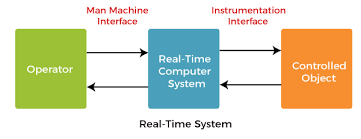Unlocking Precision: The Power of Real-Time Operating Systems
Exploring Real-Time Operating Systems
A real-time operating system (RTOS) is a specialised operating system designed to handle tasks with precise timing requirements. Unlike general-purpose operating systems, RTOS prioritises deterministic behaviour and ensures that critical tasks are executed within specific time constraints.
One of the key characteristics of an RTOS is its ability to provide predictable and consistent response times. This is essential in applications where timing is critical, such as industrial automation, aerospace systems, medical devices, and automotive control systems.
RTOS achieves real-time performance through various mechanisms, including priority-based scheduling, interrupt handling, and efficient task management. By managing tasks based on their priority levels and deadlines, an RTOS can guarantee timely execution of critical operations.
There are two main types of real-time operating systems: hard real-time and soft real-time. Hard real-time systems have strict deadlines that must be met under all circumstances, while soft real-time systems can tolerate occasional deadline misses without catastrophic consequences.
RTOS is also known for its low latency and high reliability, making it suitable for applications where failure is not an option. The design of an RTOS focuses on minimising response times and maximising system uptime to ensure continuous operation.
As technology advances and the demand for real-time processing increases, the importance of RTOS continues to grow. With the ability to handle time-critical tasks efficiently and reliably, real-time operating systems play a crucial role in various industries where precision and accuracy are paramount.
In conclusion, real-time operating systems offer a specialised solution for applications that require deterministic behaviour and precise timing control. By prioritising task scheduling, ensuring low latency, and maintaining high reliability, RTOS enables the development of robust systems that meet stringent performance requirements.
Six Essential Tips for Optimising Real-Time Operating System Performance
- Ensure efficient task scheduling to meet real-time requirements.
- Use interrupt handling mechanisms for timely response to events.
- Minimize latency by optimising communication between tasks.
- Implement prioritisation of tasks based on criticality and deadlines.
- Consider using dedicated hardware for time-sensitive operations.
- Regularly monitor system performance to identify and address bottlenecks.
Ensure efficient task scheduling to meet real-time requirements.
Ensuring efficient task scheduling is crucial in meeting the real-time requirements of a system operating under an RTOS. By prioritising tasks based on their criticality and deadlines, the RTOS can guarantee timely execution of essential operations. Efficient task scheduling minimises response times, reduces latency, and enhances system reliability, ultimately enabling the system to meet its real-time constraints effectively. Proper task scheduling is key to achieving deterministic behaviour and ensuring that time-critical tasks are executed within specified time frames, making it a fundamental aspect of real-time operating systems.
Use interrupt handling mechanisms for timely response to events.
In real-time operating systems, utilising interrupt handling mechanisms is crucial for ensuring timely responses to events. By setting up interrupts to trigger specific actions when certain events occur, an RTOS can swiftly switch context to handle critical tasks without delay. This approach allows the system to respond promptly to external stimuli or time-sensitive events, maintaining the desired level of determinism and ensuring that important operations are executed within specified time constraints. Effective interrupt handling is a key strategy in optimising the real-time performance of an operating system and plays a vital role in meeting the stringent timing requirements of various applications.
Minimize latency by optimising communication between tasks.
To minimise latency in a real-time operating system, it is crucial to optimise communication between tasks. Efficient communication mechanisms, such as message passing or shared memory, can help reduce the time taken for tasks to exchange data and synchronise their operations. By streamlining the communication pathways between tasks, the system can achieve faster response times and improved overall performance, ensuring that critical operations are executed within the required time constraints.
Implement prioritisation of tasks based on criticality and deadlines.
In the realm of real-time operating systems, a crucial tip to enhance performance is to implement prioritisation of tasks based on criticality and deadlines. By assigning priorities to tasks according to their importance and time constraints, the system can ensure that critical operations are executed in a timely manner. This approach not only improves the overall efficiency of the system but also enhances its ability to meet stringent timing requirements, making it an essential strategy for achieving reliable real-time performance.
Consider using dedicated hardware for time-sensitive operations.
When working with a real-time operating system, it is advisable to consider utilising dedicated hardware for time-sensitive operations. By allocating specific hardware resources for critical tasks, you can enhance the efficiency and reliability of real-time processing. Dedicated hardware can help reduce latency, improve response times, and ensure that time-critical operations are executed with precision. This approach can lead to better performance and more predictable behaviour in applications where timing is crucial.
Regularly monitor system performance to identify and address bottlenecks.
Regularly monitoring system performance is essential when working with a real-time operating system. By keeping a close eye on system metrics, such as CPU usage, memory allocation, and task execution times, users can quickly identify any bottlenecks that may be affecting real-time performance. Addressing these bottlenecks promptly can help ensure that critical tasks are executed within the required time constraints, maintaining the reliability and efficiency of the system. Monitoring system performance proactively allows for timely adjustments and optimisations to be made, ultimately enhancing the overall responsiveness and stability of the real-time operating system.



